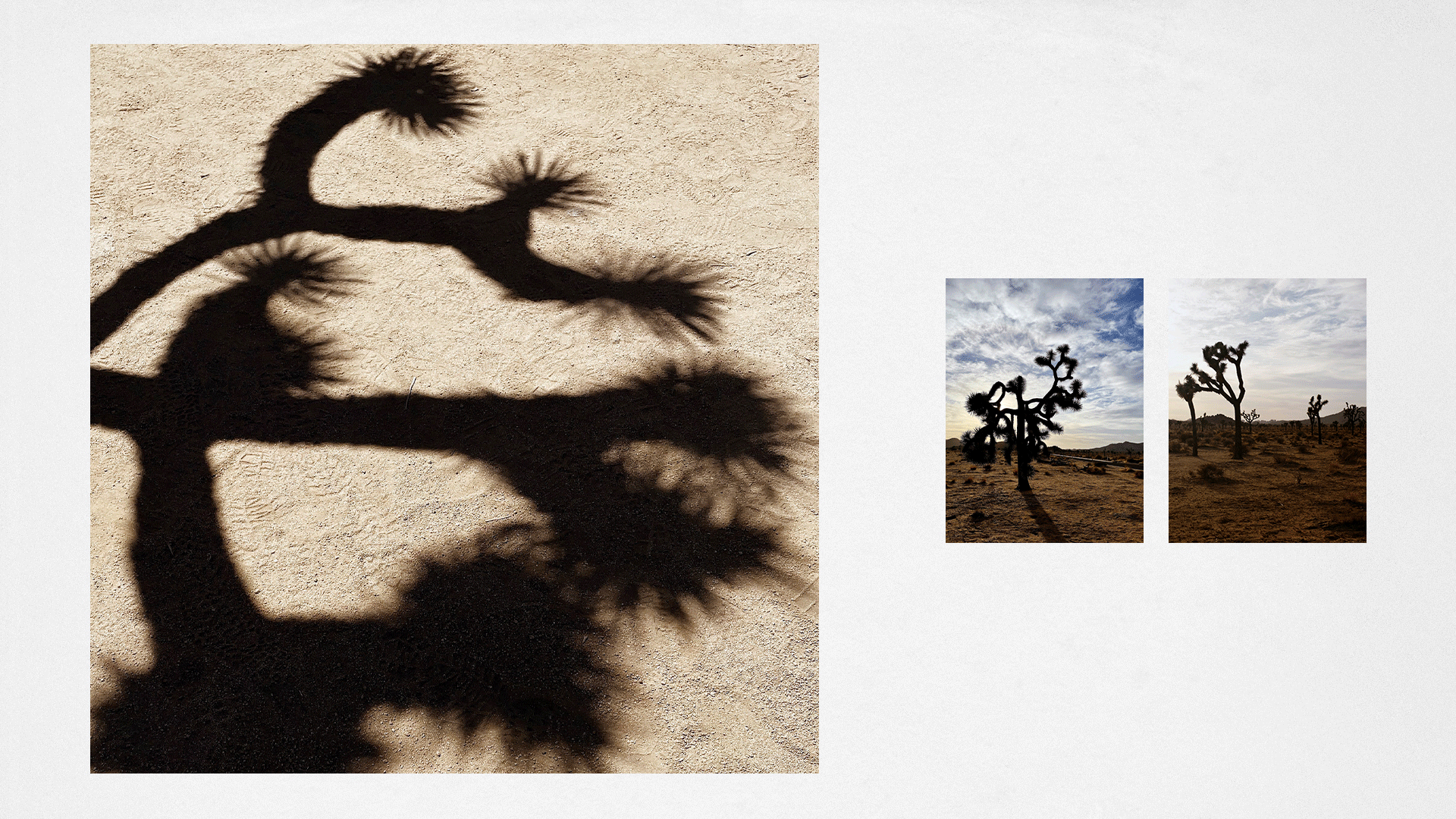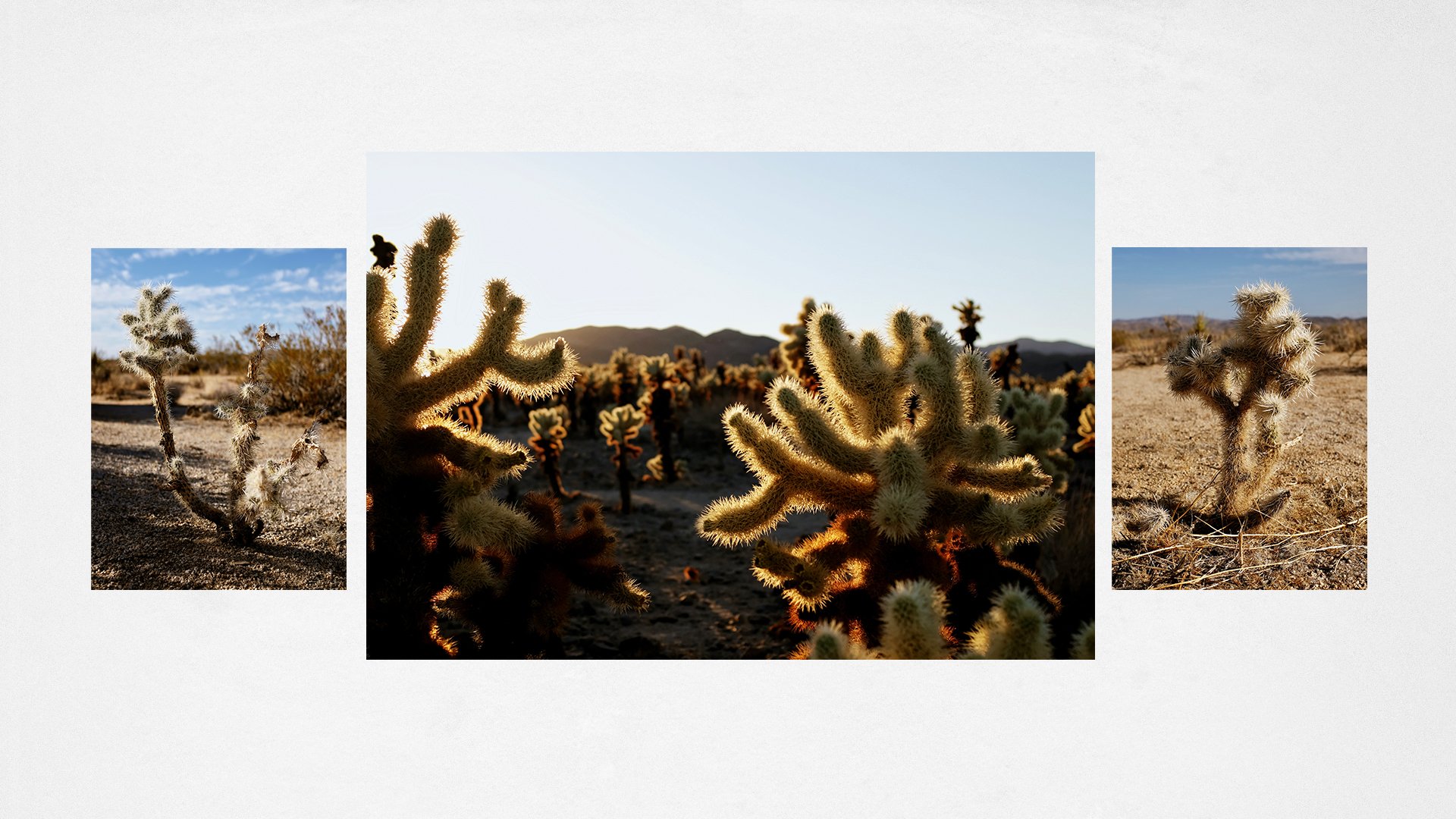round TRIP
Joshua Tree National Park
"Slow down, enjoy the view."
With these words Sara and Rich Combs begin their book "At Home in Joshua Tree – A Field Guide to Desert Living". And for true: slowing down is the key word that defines being in Joshua Tree National Park and opens wide the awareness for special moments.
Although we spent only a few days and not a whole lifetime in Joshua Tree National Park, this feeling of mindfulness for the big and especially for the small was also awakened in us and remains from now on.
And in the words of Sara and Rich, we revive our photographic discoveries, insights, and experiences, treading unimagined paths, taking only what we brought with us, and leaving behind not only our footprints but also a small part of our hearts.
Joshua Tree Joshua Tree National Park’s namesake is goofy and otherworldly in appearance. The Joshua tree is not actually a tree, but rather a plant due to its fibrous growth patterns and lack of trunk rings. Joshua trees are incredibly slow growers, growing only around one-half inch to three inches per year. Joshua trees are usually one of the first plants to bloom each year, beginning in February. Their blooms grow in clusters at the end of their branches, which appear to be a greenish-white color. Scientists believe that in order for a Joshua tree to bloom, the branch ends must freeze in the winter. After three blooms, it’s pollinated by a yucca moth which also lays her eggs in the plant ovaries.
CreosoteThis common bush can be easily overlooked as a weed, but its small resinous leaves, striped branches, scent of desert rains, and yellow blooms from April to May have made this plant most sentimental to Sara and Rich Combs. It conquers the desert, growing abundantly in an unforgiving environment. It can live thousands of years – the oldest creosote found is called King Clone and estimated to be about 11,700 years old, making it one of the oldest organisms on our planet!
Purple Prickly PearThis cactus is native to the southwestern United States and northern Mexico. It’s easily a favorite plant of the Combs couple due to its purple coloring and contrast with the desert environment. It grows from one to three feet and bears beautiful yellow flowers in the spring.
Pencil ChollaThis is a type of cholla cactus with narrow stems resembling a pencil. These cacti put out a pinkish-orange flower later in the season (around May to June).
Teddy Bear ChollaWhile this type of cholla cactus appears soft and cuddly, it’s incredibly sharp and dangerous. There are small hooks at the ends of the spines that grab onto skin, making them difficult to remove. The joints of this cholla easily detach and hitch rides with hikers or other animals to spread the plant’s seed. These cacti are found all over the Mojave, but one of the most beautiful clusters can be found at the Cholla Cactus Garden in Joshua Tree National Park. If you happen to visit between March and May, you may witness them bloom one of the few naturally green flowers.
California Buckwheat This plant has dense branches and can be found in washes in the open desert. In the spring, it puts out white flowers that turn into a rusty red as they dry out. Native Americans used buckwheat for medicinal purposes, and today the plant can also be employed as flour for things like buckwheat pancakes or noodles.
Paperback Bush This is a shrub that can grow to be a few feet tall. It has small “paper bag“ flowers at the end of the branches that start off with a purple tint, but eventually turn beige as they die. These are often found in washes and rocky slopes.
Mojave Yucca This is a cousin to the Joshua tree and often confused with them. Usually found on rocky, the yucca can grow up to sixteen feet tall, though they are often found in shorter clusters. The main telltale difference between a Joshua tree and yucca besides height is the long curly fibers that grow from the yucca’s pointy leaves. The yucca’s flowers and fruits are similar to those of the Joshua tree and bloom around the same time as well. Native Americans used the leaves to make sandals and clothing, while the roots were used for soap. Yuccas can be found all throughout Joshua Tree National Park.
Hedgehog Cactus This is an erect cylindrical cactus that grows in clusters. It puts out a vibrant red or pink flower in the spring and can be found throughout Joshua Tree National Park.
USA, June 2022. | Descriptive words by Sara and Richard Combs from their book “At Home in Joshua Tree”. | Introducing words and all photos by The Sturgheons.




















